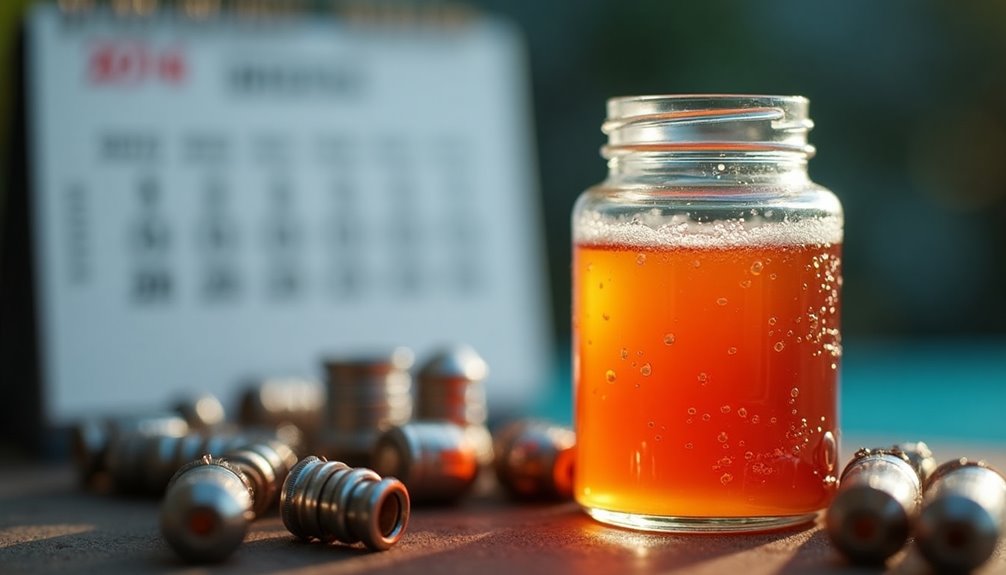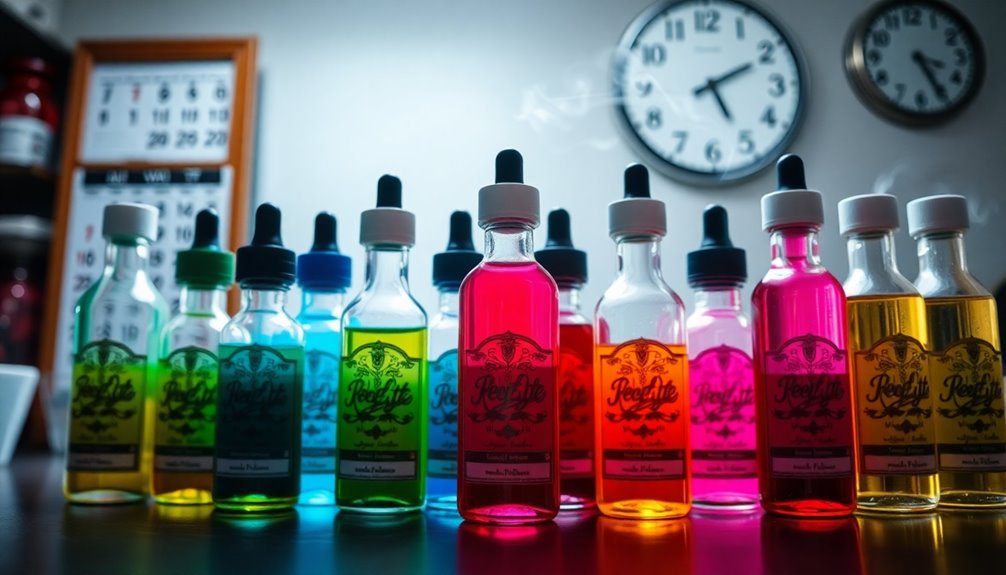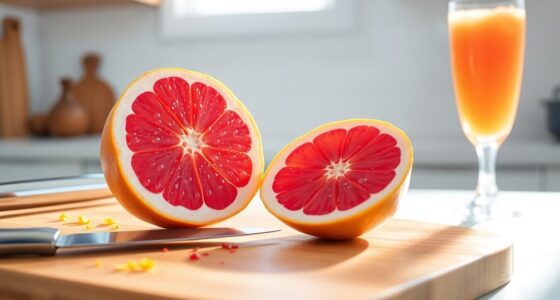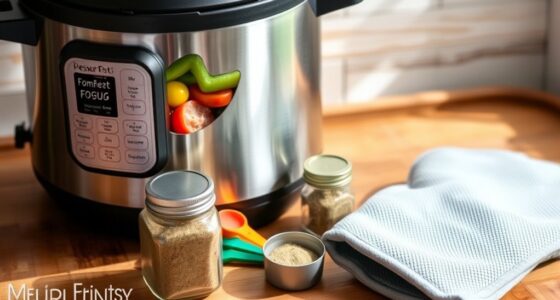Vape juice can last between 1 to 2 years if unopened, depending on its type. Nicotine-free options typically last about a year when sealed, while opened vape juice lasts shorter — about 3 to 12 months. Factors like exposure to air, heat, and light can affect its quality and lifespan. Proper storage can help maintain freshness. Keep checking for any changes in color, smell, or taste to ensure you're getting the best experience possible. There's more to consider!
Key Takeaways
- Unopened vape juice generally lasts between 1 to 2 years, depending on nicotine content and storage conditions.
- Nicotine-free vape juice has a shelf life of about 1 year when sealed.
- Opened freebase nicotine vape juice typically lasts around 3 to 6 months, while opened nicotine-free juice lasts 6 to 12 months.
- Exposure to air, heat, and light can significantly shorten the shelf life of vape juice.
- Signs of expiration include changes in color, off smells, strange tastes, and unusual consistency.

When you buy vape juice, you might wonder how long it'll last before it goes bad. The shelf life varies depending on whether it contains nicotine or not. Typically, unopened vape juice can last between 1 to 2 years. If you've got nicotine-free vape juice, you can expect it to last around a year when sealed. On the other hand, if you're using freebase nicotine vape juice, it has a longer shelf life of up to 2 years when unopened.
However, once you pop the cap on that bottle, the story changes. Opened e-liquid has a significantly shorter lifespan. For nicotine-free vape juice, it usually drops to about 6 to 12 months after opening. For freebase nicotine, you're looking at a shelf life of around 3 to 6 months. This reduction in shelf life is largely due to exposure to air, heat, and light, which can degrade the quality of the vape.
To keep your vape juice at its best quality, it's crucial to store your e-liquid properly. Always aim to keep it in a dark place, away from direct sunlight and heat sources. This will help maintain the integrity of the ingredients and extend the shelf life.
If you notice any signs of expired vape juice, like a change in color, an off smell, or a strange taste, it's best to toss it out. Regularly inspecting your opened e-liquid is essential. A quick visual check can reveal changes in appearance, while a taste test can help you determine if the flavor has degraded.
If you notice your vape juice no longer tastes as it should or has an unusual consistency, don't hesitate to dispose of it. You want to ensure you're enjoying the best quality experience each time you vape.
The quality of the vape can significantly diminish if you're using old or expired juice. Not only can the flavor become unpleasant, but the vaping experience itself can be compromised. It's not just about getting a hit of nicotine; it's about enjoying the rich flavors and smoothness that high-quality vape juice offers.
Therefore, being mindful of how long your vape juice has been opened and taking proper care of it will go a long way in ensuring you get the best experience.
Frequently Asked Questions
Can You Use 3 Year Old Vape Juice?
You can technically use 3-year-old vape juice, but it's not recommended.
Over time, the flavors and consistency change, so you might notice a harsh or unpleasant taste.
Look for signs like darkened color, separation, or off-smells; these indicate the juice is likely past its prime.
While it may not be toxic, your vaping experience could suffer significantly.
It's best to stick with fresher e-liquids for optimal enjoyment.
Does Vape Juice Go Bad?
Imagine opening a bottle of vape juice, expecting a burst of flavor, only to be met with a stale, odd smell.
Yes, vape juice can go bad. You'll notice signs like darkening color and separation of ingredients. It's crucial to check for these changes.
If your juice smells or tastes off, it's best to toss it. Proper storage can help maintain quality, but even then, it doesn't last forever.
How Long Can You Keep Liquid in a Vape?
You can keep liquid in your vape for varying periods, depending on the type.
If it's unopened, it'll last longer than if it's been opened.
Once you've opened it, nicotine-free juice usually stays good for 6 to 12 months, while freebase nicotine e-liquids might only last 3 to 6 months.
Always store your liquid in a cool, dark place and watch for any changes in color, smell, or flavor to ensure its quality.
What Happens if You Smoke Out of Date Liquid?
If you smoke out-of-date liquid, you might find it's like trying to savor a gourmet meal that's gone cold—nothing but disappointment!
The flavor can turn bland or even strange, and the nicotine might weaken, leaving you craving more.
You may also notice changes in consistency, with the liquid thickening or separating.
While it's usually not toxic, it's wise to trust your taste buds.
If it doesn't taste right, it's best to toss it.
Conclusion
In the world of vape juice, freshness is key, like ripe fruit ready to be savored. Generally, you can expect your juice to last about one to two years if stored properly, much like a fine wine aging in a cool cellar. However, keep an eye on its color and smell—those are your telltale signs of quality. So, treat your vape juice like a cherished treasure, and it'll reward you with flavorful clouds for a long time.
Cindy thoroughly researches juicing trends, techniques, and recipes to provide readers with practical advice and inspiration. Her writing style is accessible, engaging, and designed to make complex concepts easy to understand. Cindy’s dedication to promoting the advantages of juicing shines through her work, empowering readers to make positive changes in their lives through the simple act of juicing.

















